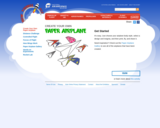
Create Your Own Paper Airplane
- Subject:
- Physical Science
- Material Type:
- Activity/Lab
- Provider:
- National Air and Space Museum
- Author:
- National Air and Space Museum
- Date Added:
- 09/14/2022

Create Your Own Paper Airplane
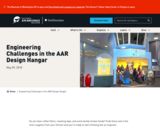
Do you have coffee filters, masking tape, and some bendy straws handy? Grab those and a few more supplies from your kitchen and you're ready to start thinking like an engineer.
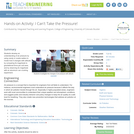
Students develop an understanding of air pressure by using candy or cookie wafers to model how it changes with altitude, by comparing its magnitude to gravitational force per unit area, and by observing its magnitude with an aluminum can crushing experiment.
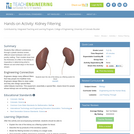
In this activity, students filter different substances through a plastic window screen, different sized hardware cloth and poultry netting. Their model shows how the thickness of a filter in the kidney is imperative in deciding what will be filtered out and what will stay within the blood stream.
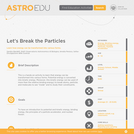
This is a hands-on activity to learn that energy can be transformed into various forms. Potential energy is converted into kinetic energy. Moreover, this kinetic energy can be used (if more than the relative binding energy) to break atoms, particles and molecules to see “inside” and to study their constituents.

Learn how to make a water filter using materials from around your home or classroom.
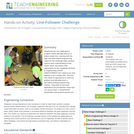
Student groups are challenged to program robots with light sensors to follow a black line. Learning both the logic and skills behind programming robots for this challenge helps students improve their understanding of how robots "think" and widens their appreciation for the complexity involved in programming LEGO® MINDSTORMS® NXT robots to do what appears to be a simple task. They test their ideas for approaches to solve the problem and ultimately learn a (provided) working programming solution. They think of real-world applications for line-follower robots that use sensor input. A PowerPoint® presentation and pre/post quizzes are provided.
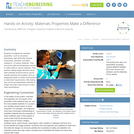
Students investigate the materials properties such as acoustical absorptivity, light reflectivity, thermal conductivity, hardness, and water resistance of various materials. They use sound, light and temperature sensors to collect data on various materials. They practice making design decisions about what materials would be best to use for specific purposes and projects, such as designing houses in certain environments to meet client requirements. After testing, they use the provided/tested materials to design and build model houses to meet client specifications.
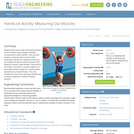
Student teams build model hand dynamometers used to measure grip strengths of people recovering from sports injuries. They use their models to measure how much force their classmates muscles are capable of producing, and analyze the data to determine factors that influence a person's grip strength. They use this information to produce a recommendation of a hand dynamometer design for a medical office specializing in physical therapy. They also consider the many other ways grip strength data is used by engineers to design everyday products.
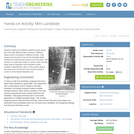
Students explore how different materials (sand, gravel, lava rock) with different water contents on different slopes result in landslides of different severity. They measure the severity by how far the landslide debris extends into model houses placed in the flood plain. This activity is a small-scale model of a debris chute currently being used by engineers and scientists to study landslide characteristics. Much of this activity setup is the same as for the Survive That Tsunami activity in Lesson 5 of the Natural Disasters unit.
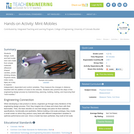
Students design, build and test model race cars made from simple materials (lifesaver-shaped candies, plastic drinking straws, Popsicle sticks, index cards, tape) as a way to explore independent, dependent and control variables. They measure the changes in distance travelled with the addition of mass to the vehicles. Students also practice the steps of the engineering design process by brainstorming, planning, building, testing, and improving their "mint-mobiles."

Student pairs experience the iterative engineering design process as they design, build, test and improve catching devices to prevent a "naked" egg from breaking when dropped from increasing heights. To support their design work, they learn about materials properties, energy types and conservation of energy. Acting as engineering teams, during the activity and competition they are responsible for design and construction planning within project constraints, including making engineering modifications for improvement. They carefully consider material choices to balance potentially competing requirements (such as impact-absorbing and low-cost) in the design of their prototypes. They also experience a real-world transfer of energy as the elevated egg's gravitational potential energy turns into kinetic energy as it falls and further dissipates into other forms upon impact. Pre- and post-activity assessments and a scoring rubric are provided. The activity scales up to district or regional egg drop competition scale. As an alternative to a ladder, detailed instructions are provided for creating a 10-foot-tall egg dropper rig.
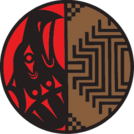
The original Native American story component lesson was developed as part of an Office of Superintendent of Public Instruction (OSPI) and Washington State Leadership and Assistance for Science Education Reform (LASER) project funded through an EPA Region 10 grant. The stories were told by Roger Fernandes of the Lower Elwha Klallam tribe. Mr. Fernandes has been given permission by the tribes to tell these stories.As these lessons and stories were shared prior to the adoption of the Washington State Science Learning Standards in 2013, there was a need to align these stories with the current science standards. This resource provides a current alignment and possible lesson suggestions on how these stories can be incorporated into the classroom. This alignment work has been funded by the NGSS & Climate Science Proviso of the Washington State Legislature as a part of North Central Educational Service District's award.
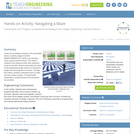
Using new knowledge acquired in the associated lesson, students program LEGO MINDSTORMS(TM) NXT robots to go through a maze using movement blocks. The maze is created on the classroom floor with cardboard boxes as its walls. Student pairs follow the steps of the engineering design process to brainstorm, design and test programs to success. Through this activity, students understand how to create and test a basic program. A PowerPoint® presentation, pre/post quizzes and worksheet are provided.
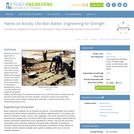
Students conduct an experiment to determine how varying the composition of a construction material affects its strength. They make several adobe bricks with differing percentages of sand, soil, fibrous material and water. They test the bricks for strength by dropping them onto a concrete surface from progressively greater heights. Students graph the experiment results and use what they learn to design their own special mix that maximizes the bricks' strength. During the course of the experiment, students learn about variables (independent, dependent, control) and the steps of the engineering design process.
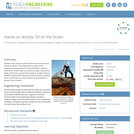
Students learn about oil spills and their environmental and economic effects. They experience the steps of the engineering design process as they brainstorm potential methods for oil spill clean-up, and then design, build, and re-design oil booms to prevent the spread of oil spills. During a reflective session after cleaning up their oil booms, students come up with ideas on how to reduce oil consumption to prevent future oil spills.

Parachutes slow down the fall of an object by creating more air resistance for the falling object. All objects fall at the same speed, regardless of their mass. But, more air resistance can slow them down. So, as a parachute is made larger, it will have more air resistance and slow down the object more.
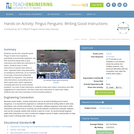
Students use the free computer game Pingus to learn how engineers, specifically environmental engineers, use their technical writing skills to give instructions and follow the instructions of others. Students learn to write instructions to express their ideas in clear, organized ways using descriptive, un-ambiguous sentences, as an example of one type of technical writing that important for engineers. The students write instructions enumerating how to beat a game level, which represents surveying that level for environmental problems. As a test of their instructions, students review each others' instructions and offer suggestions for improvement, and then revise their instructions to make them better. Students also see some examples of environmental problems.
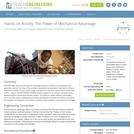
Students learn about the mechanical advantage offered by pulleys in an interactive and game-like manner. By virtue of the activity's mechatronic presentation, they learn to study a mechanical system not as a static image, but rather as a dynamic system that is under their control. Using a LEGO® MINDSTORMS® robotics platform and common hardware items, students build a mechanized elevator system. The ability to control different parameters (such as motor power, testing load and pulley arrangement) enables the teacher, as well as the students, to emphasize and reinforce particular aspects/effects of mechanical advantage.
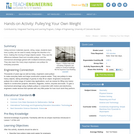
Using common materials (spools, string, soap), students learn how a pulley can be used to easily change the direction of a force, making the moving of large objects easier. They see the difference between fixed and movable pulleys, and the mechanical advantage gained with multiple/combined pulleys. They also learn the many ways engineers use pulleys for everyday purposes.